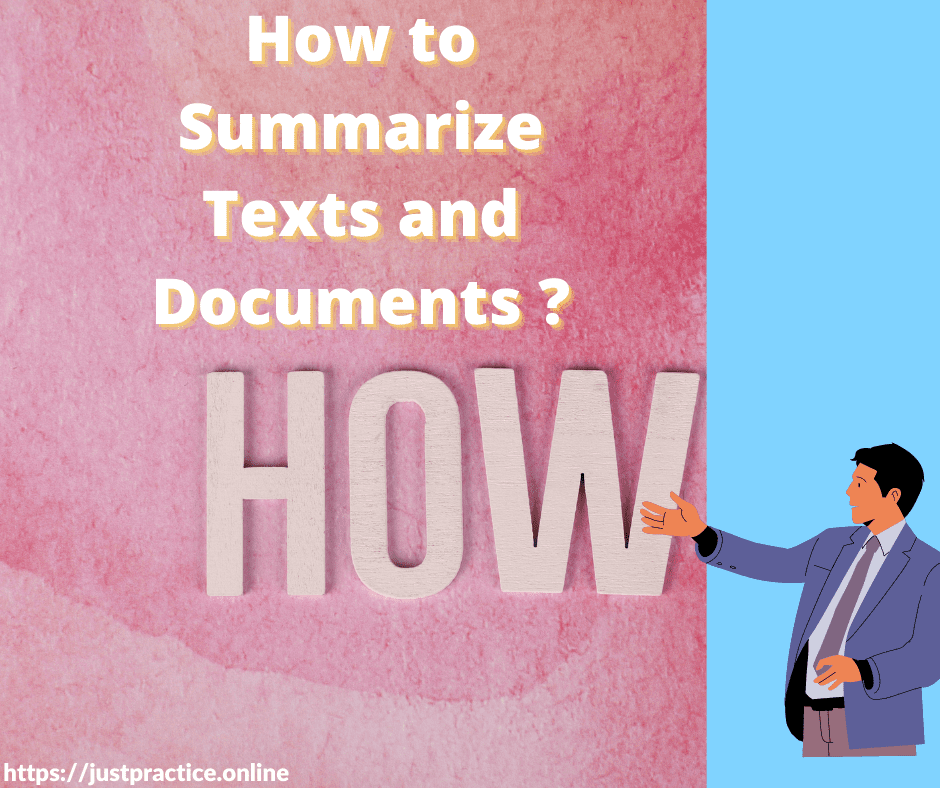
Summarizing texts and documents involves reducing the original text to its most essential points and condensing it into a shorter form. Here are some steps to follow:
- Read the text carefully: Read the text in its entirety to gain a thorough understanding of the author’s ideas and arguments.
- Identify key points: Look for the main idea, supporting points, and relevant facts in the text. Highlight or make notes on these key points.
- Eliminate unnecessary information: Remove any redundant or unnecessary information from your notes, focusing only on the most important and relevant information.
- Use your own words: Rewrite the key points in your own words, condensing the information into a shorter form.
- Check for accuracy: Make sure that your summary accurately represents the original text and that all the key points are covered.
- Review and revise: Read your summary over several times to ensure that it is concise and easy to understand. Revise it as necessary.
- Keep the purpose in mind: Remember that the purpose of summarizing is to retain the essence of the original text while removing any excess information. Keep the context and audience in mind when summarizing.
It’s important to keep in mind that summarizing requires critical reading and comprehension skills. The goal is to retain the most important information from the original text and present it in a concise and clear manner.
EXAMPLE OF SUMMARIZING DOCS
Here’s an example of summarizing a document:
Original Document:
The study conducted by the World Health Organization found that air pollution is a major global health issue, causing millions of premature deaths each year. The report highlights the importance of reducing air pollution by implementing measures such as promoting cleaner transportation options and tightening emissions standards for industries. The study also suggests that governments should invest in research and development to find more efficient and sustainable energy sources.
Summary:
The World Health Organization’s study found air pollution is a global health crisis causing premature deaths. It recommends reducing pollution by promoting clean transportation and tightening emissions standards, as well as investing in R&D for sustainable energy sources.
In this example, the summary retains the key information from the original document while condensing it into a shorter and more concise form. The summary accurately represents the main ideas and recommendations from the report and eliminates any redundant information.
ANOTHER EXAMPLE
Sure, here’s another example:
Original Document:
A new study by the National Academy of Sciences found that climate change is having a significant impact on ecosystems and wildlife populations. The report cites rising temperatures, sea level rise, and more frequent extreme weather events as the main drivers of this change. The study also highlights the need for more conservation efforts and the creation of wildlife habitats to mitigate the effects of climate change. The report recommends the implementation of policies to reduce greenhouse gas emissions and protect wildlife habitats.
Summary:
The National Academy of Sciences study found that climate change is affecting ecosystems and wildlife. Rising temperatures, sea level rise, and extreme weather events are the main drivers. The report calls for conservation efforts and habitat protection, as well as policies to reduce greenhouse gas emissions.
This summary accurately represents the key findings and recommendations from the original document. It eliminates any unnecessary information and presents the information in a concise and clear manner.